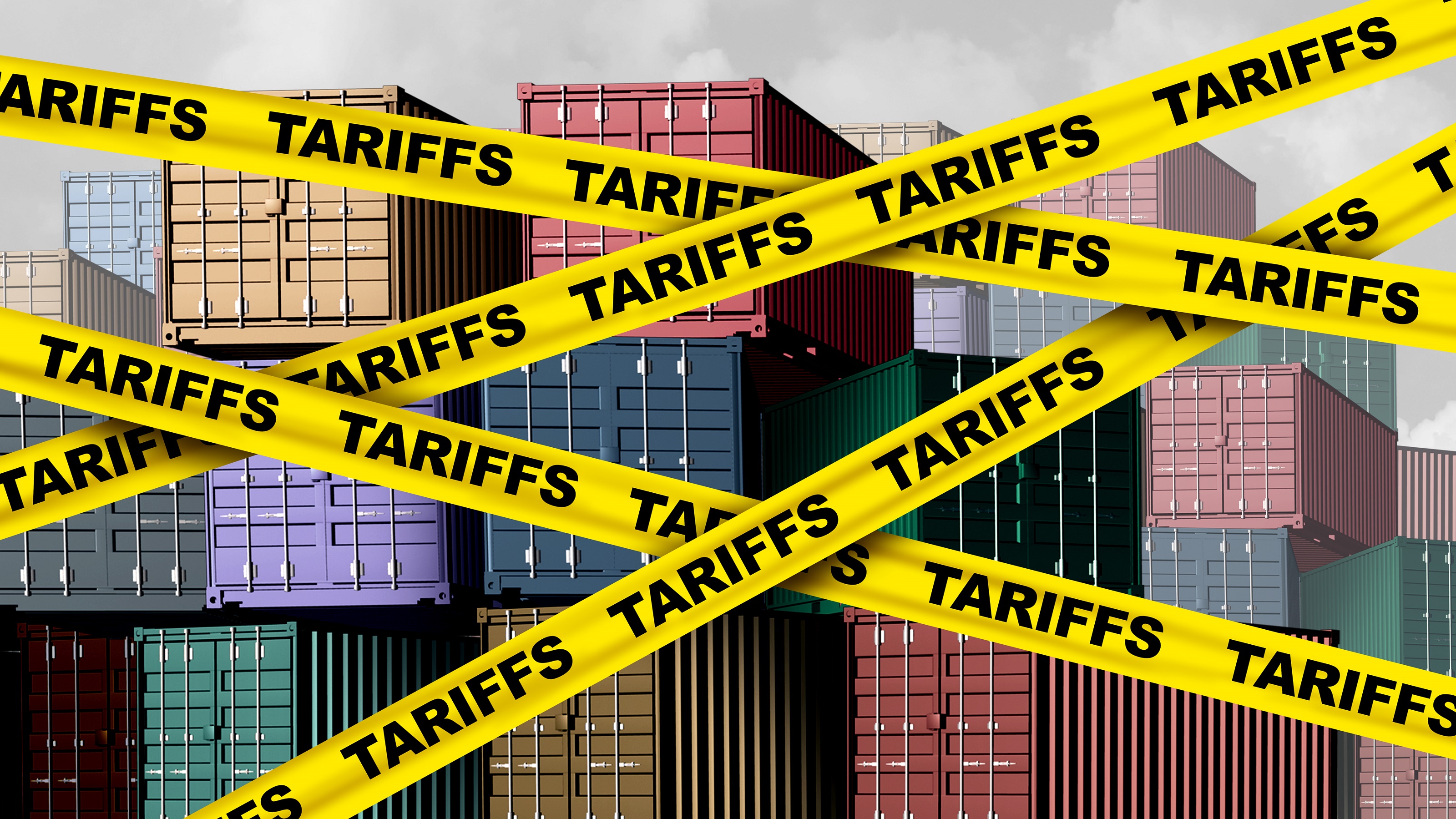One Important Retirement Age Milestone People Tend to Forget
RMDs creep up on people, and they can come with unintended tax consequences. So savvy folks plan ahead ... way ahead.


When those approaching retirement come to our office to discuss their plans, we find there are certain milestone ages they know by heart.
Most know, for example, that after age 59½, they’ll no longer have to pay the 10% early withdrawal penalty on retirement account distributions.
They know that at age 62 they’ll be eligible to claim Social Security, but if they can wait until they reach their full retirement age (66 or 67, depending on their birth year) their benefits could be greater. (To find out your own retirement age, see What’s My Social Security Full Retirement Age? )

Sign up for Kiplinger’s Free E-Newsletters
Profit and prosper with the best of expert advice on investing, taxes, retirement, personal finance and more - straight to your e-mail.
Profit and prosper with the best of expert advice - straight to your e-mail.
And many know — and celebrate — that they’ll be eligible for Medicare at age 65.
But there’s another milestone age — another half-birthday — that doesn’t get nearly as much attention from pre-retirees as those other dates. And that can be a problem.
Because — ready or not — at age 70½ savers must start taking required minimum distributions (RMDs) annually from certain qualified retirement accounts and pay income tax on that money. These withdrawals are treated as income and go on top of any other income you had generated in retirement And, without proper advance planning, these withdrawals could blow a hole in a retiree’s income and tax strategies. (Not to mention that if you fail to pull out enough money to satisfy the RMD, you could face a 50% penalty on top of the original income tax amount.)
Pensions.
Having RMDs treated as income could have a major effect on those retirees who have significant pensions. While most pensions are commonly treated as income, an RMD withdrawal would add to that income amount at the end of the year, potentially causing some tax consequences.
Even if you’ve heard of RMDs, it’s easy to make mistakes that could have expensive consequences. Here are a few steps to take now to help make sure you stay on track:
Educate yourself.
The term “required minimum distribution” seems self-explanatory: It’s the minimum amount you must withdraw from your traditional IRA, 401(k), 403(b), SEP IRA or similar retirement account starting when you reach age 70½. But it gets more complicated after that. The IRS has rules for calculating and withdrawing RMDs, and there are deadlines for when you must take your first and subsequent distributions. The IRS has helpful information about RMDs on its IRS.gov website. And Kiplinger has a couple of handy calculators to try, as well. See When Do I Have to Take My First RMD? and Calculate Your Required Minimum Distribution from IRAs.
Consider the tax consequences.
Once you’re familiar with the IRS rules and you have some idea of how much you’ll be required to withdraw from your accounts every year, you can turn your attention to minimizing the tax consequences of RMDs with some tax planning.
- If you aren’t there yet: If you aren’t 70 yet, you still have time to make adjustments that could lower future tax bills. You can adjust your income plan to include your annual RMD amounts and better manage your tax bracket. You also may wish to begin converting some of the money in your tax-deferred accounts into various tax-efficient and tax-free accounts or strategies, such as Roth IRAs.
- In the first year you’re eligible: RMDs are generally due by Dec. 31, but for first-timers, there’s a grace period that extends the deadline to April 1 of the following year. Before you decide to delay, though, keep in mind that your second RMD will be due at the end of that same year. The doubled-up distribution could potentially bump some of your income into a higher tax bracket and cause your Social Security benefits to be taxable and/or make you subject to the Medicare high-income surcharge.
Think about your overall portfolio.
Because RMDs are due at the end of the year, people often wait until November or December to withdraw the money. But if the market is down at that time, you might end up having to sell your investments at a lower price. It might make more sense to plan these RMDs out in advance.
If the RMD discussion is all new to you — or if you knew about RMDs but were putting off planning for them until you were closer to that 70½ milestone — take the time now to look at your options. The rules can be complex, especially if you have more than one retirement account, and the penalties are serious if you’re late or don’t comply.
Planning for RMDs now can help mitigate headaches later.
Kim Franke-Folstad contributed to this article.
Investment advisory services offered only by duly registered individuals through AE Wealth Management, LLC (AEWM). AEWM and Oxford Advisory Group are not affiliated companies. Neither the firm nor its agents or representatives may give tax or legal advice. Individuals should consult with a qualified professional for guidance before making any purchasing decisions. Oxford Advisory Group is not affiliated with the U.S. government or any governmental agency. 00198955
Get Kiplinger Today newsletter — free
Profit and prosper with the best of Kiplinger's advice on investing, taxes, retirement, personal finance and much more. Delivered daily. Enter your email in the box and click Sign Me Up.

Samuel J. Dixon is managing partner of Oxford Advisory Group (www.oxfordadvisorygroup.com). He specializes in retirement planning and investing for retirees, executives and business owners.
-
 Married? Five Ways to Ensure Your Estate Plans Work in Tandem
Married? Five Ways to Ensure Your Estate Plans Work in TandemGetting on the same page now means fewer potential problems when it counts.
By Kiplinger Advisor Collective
-
 12 Investments No Retiree Should Make
12 Investments No Retiree Should MakeIn retirement, when it's wise to take fewer risks with your nest egg, some investments are just nuts.
By David Rodeck
-
 Before You Invest Like a Politician, Consider This Dilemma
Before You Invest Like a Politician, Consider This DilemmaAs apps that track congressional stock trading become more popular, investors need to take into consideration some caveats.
By Ryan K. Snover, Investment Adviser Representative
-
 How to Put Together Your Personal Net Worth Statement
How to Put Together Your Personal Net Worth StatementNow that tax season is over for most of us, it's the perfect time to organize your assets and liabilities to assess your financial wellness.
By Denise McClain, JD, CPA
-
 Bouncing Back: New Tunes for Millennials Trying to Make It
Bouncing Back: New Tunes for Millennials Trying to Make ItAdele's mournful melodies kick off this generation's financial playlist, but with the right plan, Millennials can finish strong.
By Alvina Lo
-
 Financial Steps After a Loved One's Alzheimer's Diagnosis
Financial Steps After a Loved One's Alzheimer's DiagnosisIt's important to move fast on legal safeguards, estate planning and more while your loved one still has the capacity to make decisions.
By Thomas C. West, CLU®, ChFC®, AIF®
-
 Two Don'ts and Four Dos During Trump's Trade War
Two Don'ts and Four Dos During Trump's Trade WarThe financial rules have changed now that tariffs have disrupted the markets and created economic uncertainty. What can you do? (And what shouldn't you do?)
By Maggie Kulyk, CRPC®, CSRIC™
-
 I'm Single, With No Kids: Why Do I Need an Estate Plan?
I'm Single, With No Kids: Why Do I Need an Estate Plan?Unless you have a plan in place, guess who might be making all the decisions about your prized possessions, or even your health care: a court.
By Cynthia Pruemm, Investment Adviser Representative
-
 Most Investors Aren't as Diversified as They Think: Are You?
Most Investors Aren't as Diversified as They Think: Are You?You could be facing a surprisingly dangerous amount of concentration risk without realizing it. Fixing that problem starts with knowing exactly what you own.
By Scott Noble, CPA/PFS
-
 Will My Children Inherit Too Much?
Will My Children Inherit Too Much?If you worry about how your children will handle an inheritance, you're not alone. Luckily, you have options — from lifetime gifting to trusts — that can help.
By Mallon FitzPatrick, CFP®, AEP®, CLU®